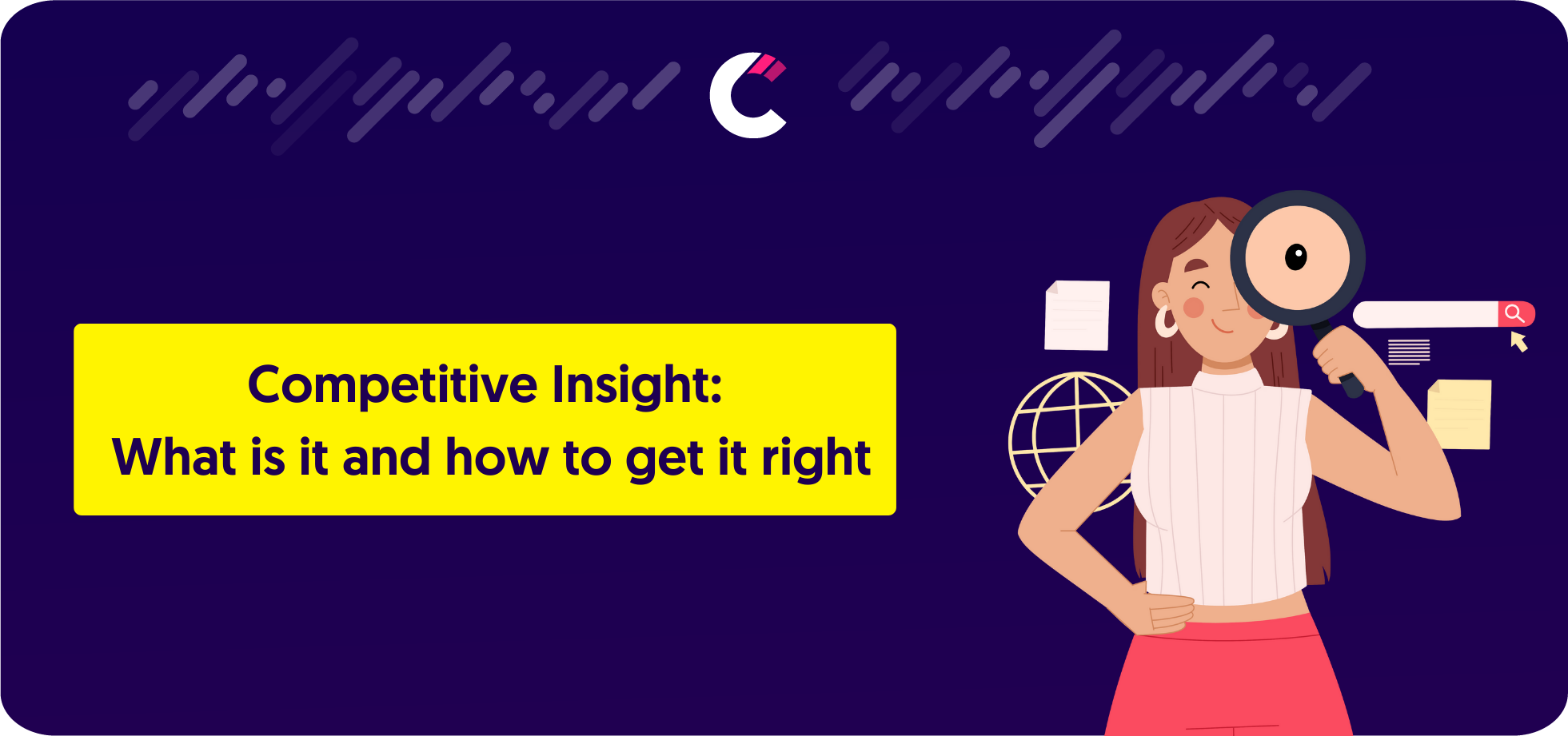
In today’s competitive business environment, understanding your competitors is more than just a necessity; it’s a significant aspect of strategic planning. This understanding is what we call competitive insight. It involves a thorough analysis of your competitors‘ strategies, strengths, weaknesses, and market behavior. In this guide, we will explore the concept of competitive insight in depth. We’ll discuss its importance, how it can be effectively gathered, and the ways in which it can be used to enhance your business strategy. Whether you’re new to the concept or looking to deepen your existing knowledge, this article aims to provide valuable insights for businesses of all sizes.
Competitive insight, by definition, is the process of gathering and analyzing detailed information about competitors and the market. It goes beyond surface-level knowledge, delving into the depths of how competitors operate, what strategies they employ, and how they respond to market changes. This insight is not just about collecting data; it’s about understanding the implications of that data for your business. It helps you anticipate market trends, make informed strategic decisions, and identify opportunities for differentiation. In essence, competitive insight offers a clearer view of the competitive landscape, enabling businesses to stay one step ahead.
The real worth of competitive insights lies in their ability to transform raw data into actionable strategies. By understanding what your competitors are doing right or wrong, you can fine-tune your business approach to capitalize on market opportunities and avoid potential pitfalls. It’s not just about copying what others are doing; it’s about learning from the broader market dynamics to innovate and differentiate your offerings. Competitive insights can also help you identify emerging trends, allowing you to adapt and evolve ahead of the curve. In short, these insights are crucial for making data-driven decisions that propel business growth and sustainability in a competitive marketplace.
Gaining a deep understanding of your competitors isn’t just a one-step process; it involves a multi-faceted approach, each offering unique insights into the competitive landscape. From analyzing direct competitors to understanding broader market dynamics, these strategies collectively paint a comprehensive picture. Below, we delve into three key strategies: Competitor Analysis, Market Research, and SWOT Analysis, each serving as a critical piece of the puzzle in gathering competitor insights.
Competitor analysis is the cornerstone of gaining competitive insight. It involves an in-depth look at your competitors’ products, marketing strategies, sales processes, and customer feedback. The goal here is to identify their strengths and weaknesses. Sources like competitor websites, press releases, case studies, and customer reviews are invaluable in this process. It’s not just about what your competitors are doing, but why they are doing it and how it’s working for them.
Market research broadens your understanding by providing context to your competitors’ actions. This includes studying industry trends, customer behaviors, and market demands. Surveys, interviews, and market reports are key tools in this area. Market research helps in identifying gaps in the market that your competitors might be missing, offering you a chance to fill those gaps.
SWOT Analysis (Strengths, Weaknesses, Opportunities, Threats) is a structured approach to evaluating not just your competitors, but also your own business in relation to the market. It helps in understanding where your competitors are strong and where they are vulnerable, and how external factors like market trends and customer preferences are influencing the competitive landscape. This analysis is essential for strategic planning and decision-making.
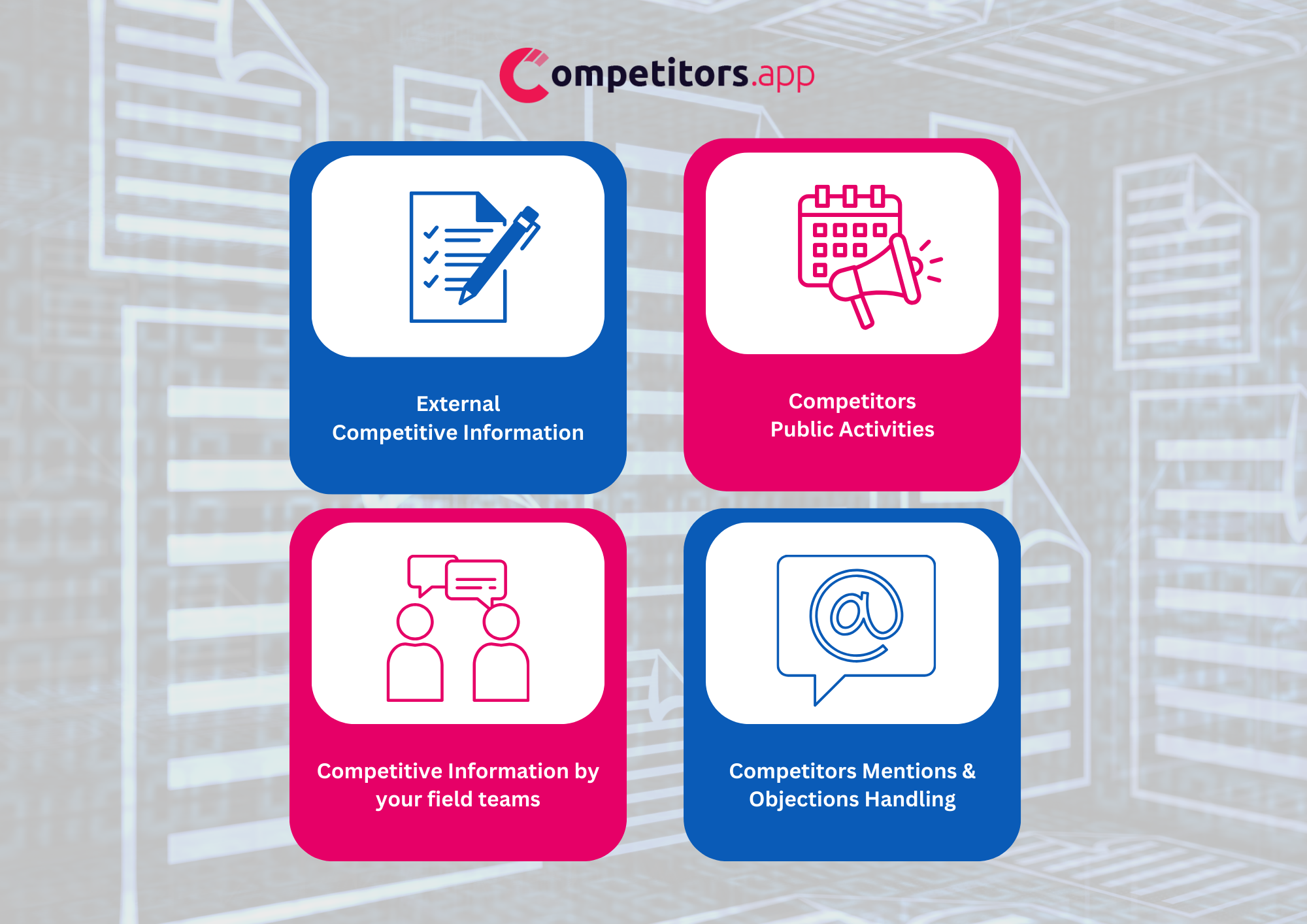
To effectively build a robust competitive insight, it’s crucial to gather information from diverse, reliable sources. Each source offers a unique perspective, contributing to a more holistic view of your competitors and the market. Here are four essential sources of information that can significantly enhance your competitive insight:
Collect and Prioritize External Competitive Information Begin by gathering external data about your competitors. This includes their public announcements, marketing campaigns, financial reports, and customer reviews. Prioritizing this information based on relevance and impact on your business is essential for an effective analysis.
Uncover Your Competitors’ Public Activities Monitor your competitors’ public activities such as product launches, partnerships, and promotional events. Social media channels, press releases, and industry forums are great places to keep an eye on these activities. Understanding their public moves can provide insights into their strategic direction.
Tap into the Collective Competitive Knowledge Gathered by Your Field Teams Your sales and customer service teams can be valuable sources of competitive information. They interact with customers who might have considered or used your competitors’ products. Encourage these teams to share insights and customer feedback that can reveal competitor strengths and weaknesses.
Gather Competitors’ Mentions and Examples of Objection Handling from Your Representatives Pay attention to how your competitors are discussed in conversations with clients and on sales calls. This can include direct mentions, comparisons, or objections raised by customers. Such interactions are a goldmine for understanding how your market perceives your competitors and what factors influence their decision-making.
Choosing the right tools is crucial in efficiently gathering and analyzing competitor insights. These tools vary from accessible free options to more sophisticated paid versions, catering to different business sizes and needs. Here’s an updated overview of some highly recommended tools:

A handy tool for receiving notifications about your competitors' online mentions and activities.
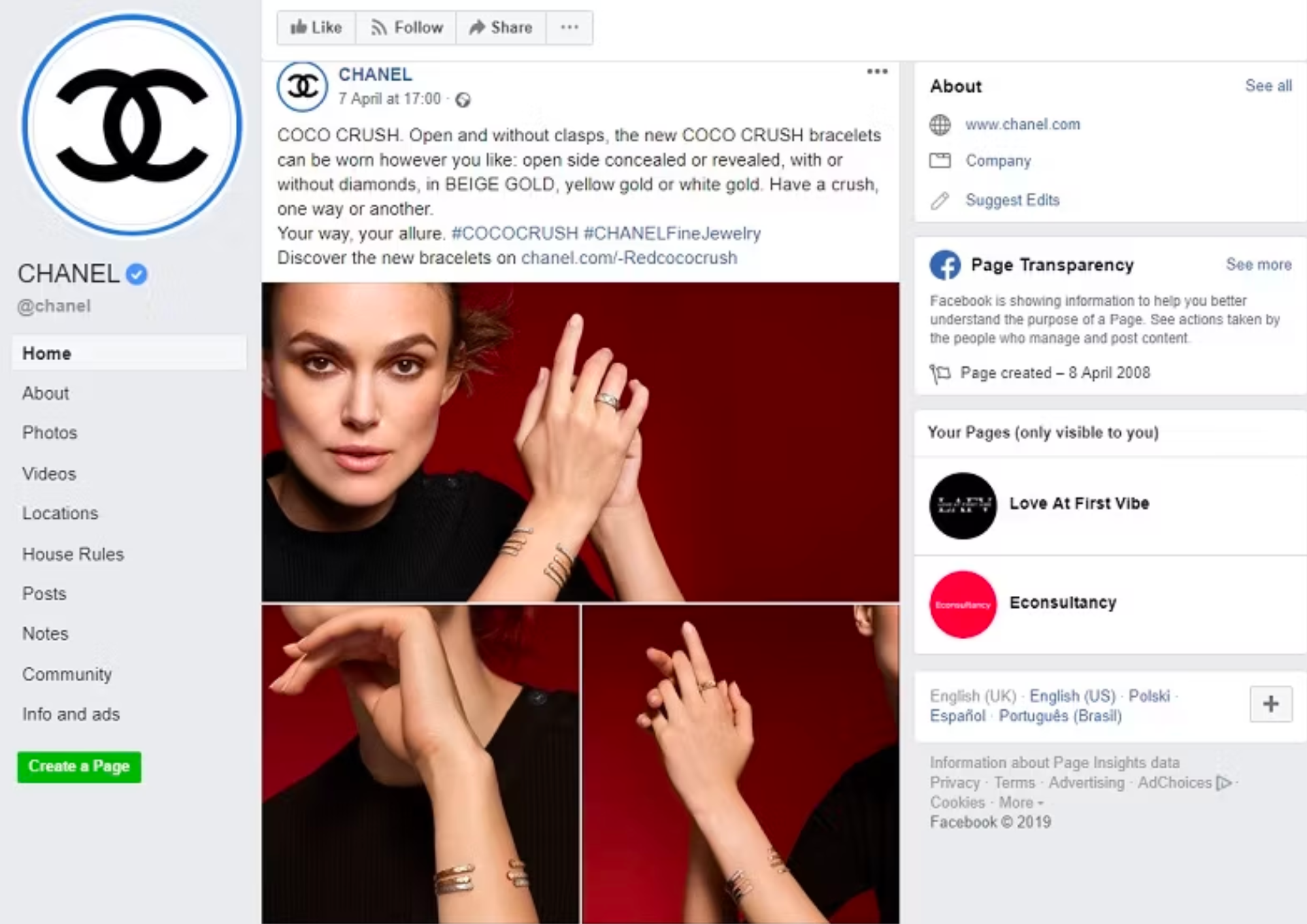
Utilize search and analytics features on platforms like Twitter and Facebook to monitor competitors’ social media engagement and strategy.

Offers a 15-day full access free trial, providing insights into competitors’ online activities, social media presence, website changes, and more.

This is an all-in-one tool for comprehensive SEO, market analysis, including tracking competitor website traffic, keywords, and backlinks.
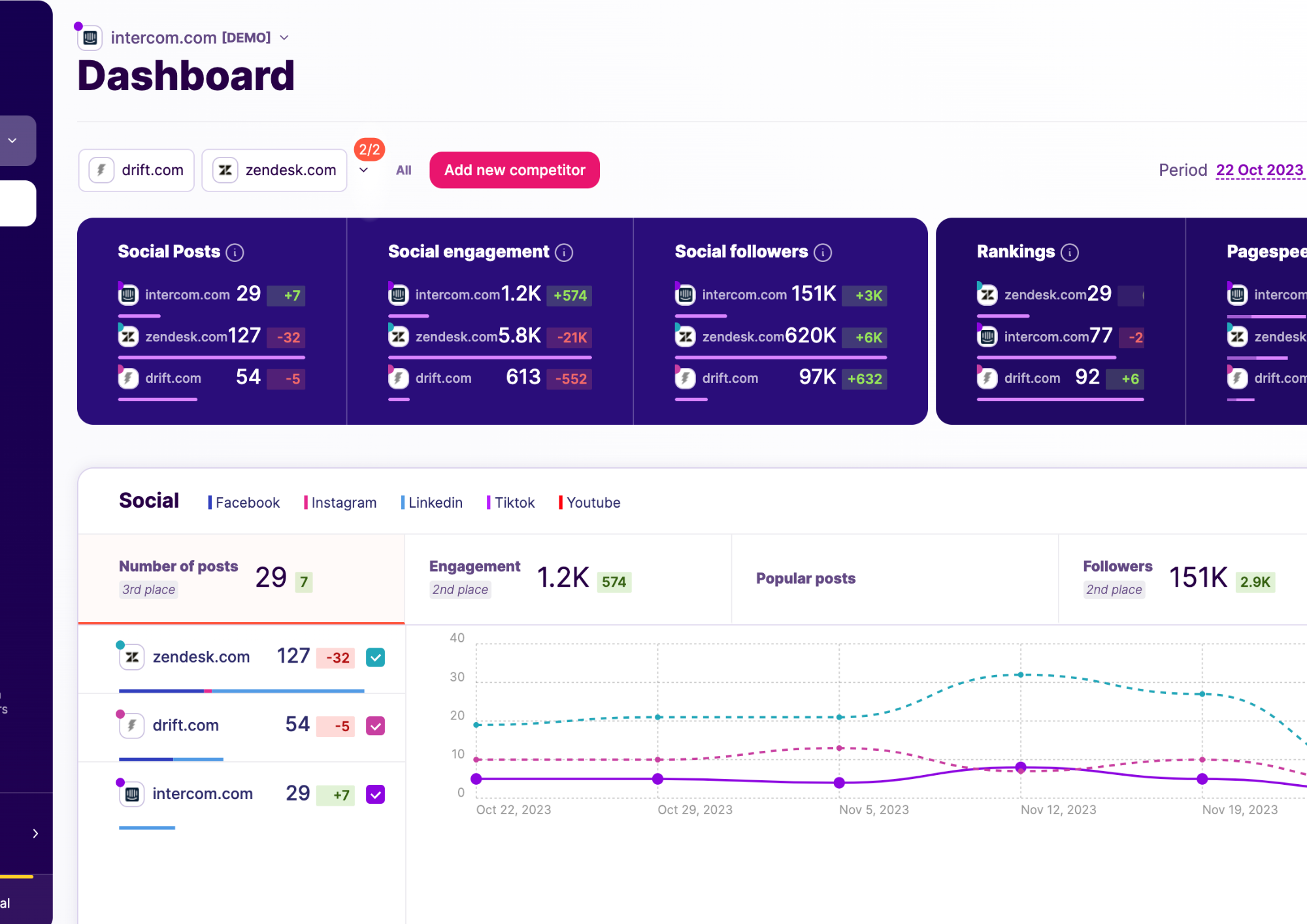
Beyond the free trial, their paid version offers extended capabilities in monitoring a wide range of competitor activities, including marketing strategies, website updates, and online presence.

Ideal for keeping an eye on competitors' funding rounds, leadership changes, and overall industry trends.
Each tool comes with its strengths and caters to various aspects of competitive insight. Depending on your specific needs and budget, you might find a combination of these tools to be the most effective in gaining a thorough understanding of your competitors.

Competitors.app empowers businesses to identify market leaders by analyzing online mentions, social media presence, and public reviews. Track how frequently competitors are mentioned and how they are rated by customers to understand their market standing.

The platform offers detailed analysis of social media channels, providing data on likes, engagement rates, and popular posts. This helps understand which competitors have the most influential social media strategy.

Competitors.app tracks updates on competitors' websites, such as new pages, product changes, and upcoming events. This insight helps in understanding how competitors evolve their online strategies.
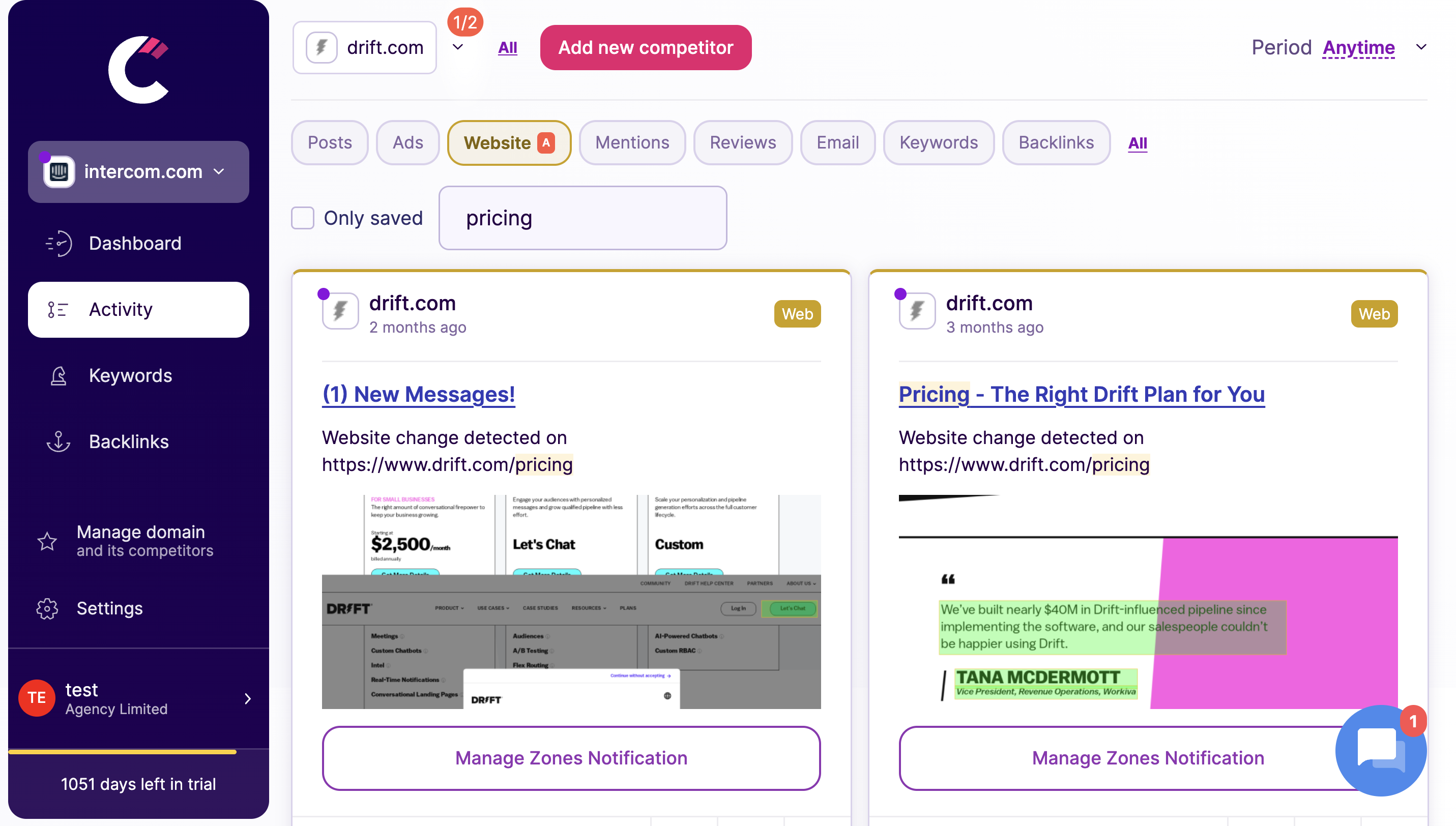
Track and understand competitors' pricing page updates for e-commerce or SaaS products. The platform provides real-time alerts and a historical view of pricing changes.
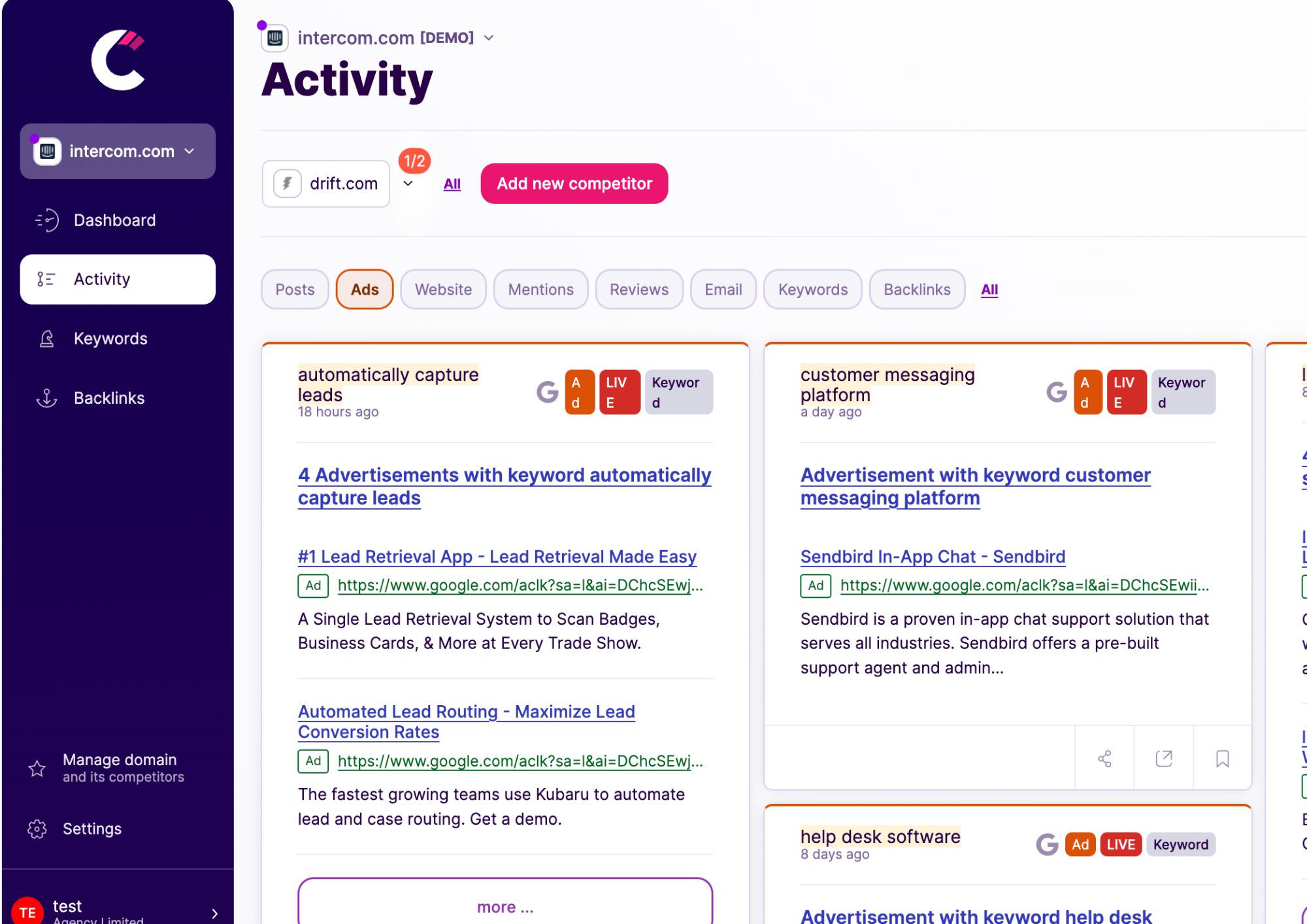
Gain insights into competitors' promotional strategies, including partnerships, advertising campaigns, and content strategies. This comprehensive view helps identify successful tactics and areas for improvement.

Use the platform's timeline graph to uncover seasonal trends in competitors' strategies, helping plan your marketing and sales efforts in response to these observed patterns.

Compare your target audience with that of your competitors to determine if there are overlaps or untapped segments.
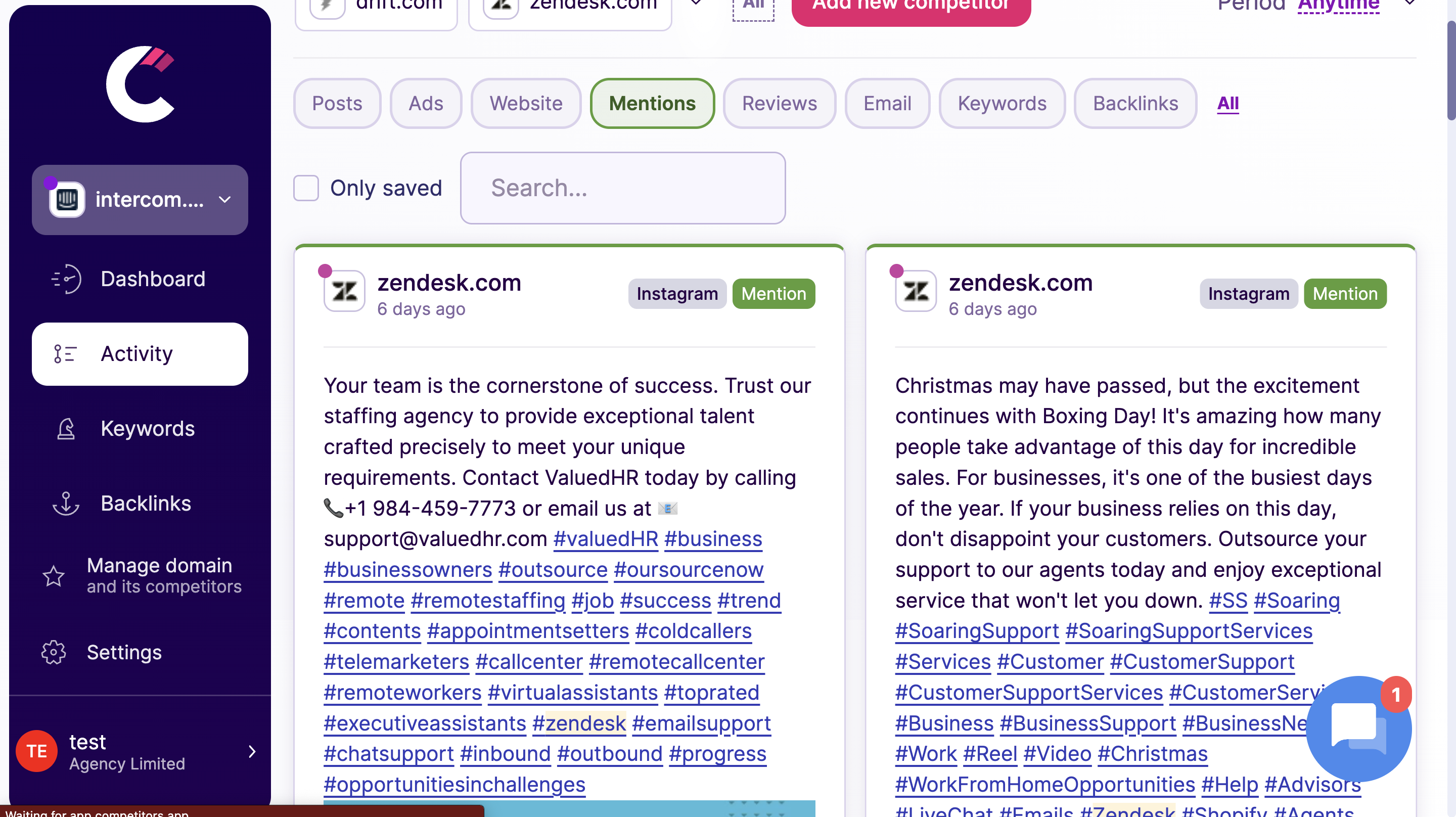
Identify which products or services are popular among competitors by monitoring online mentions and customer reviews. This information guides in enhancing your own offerings.
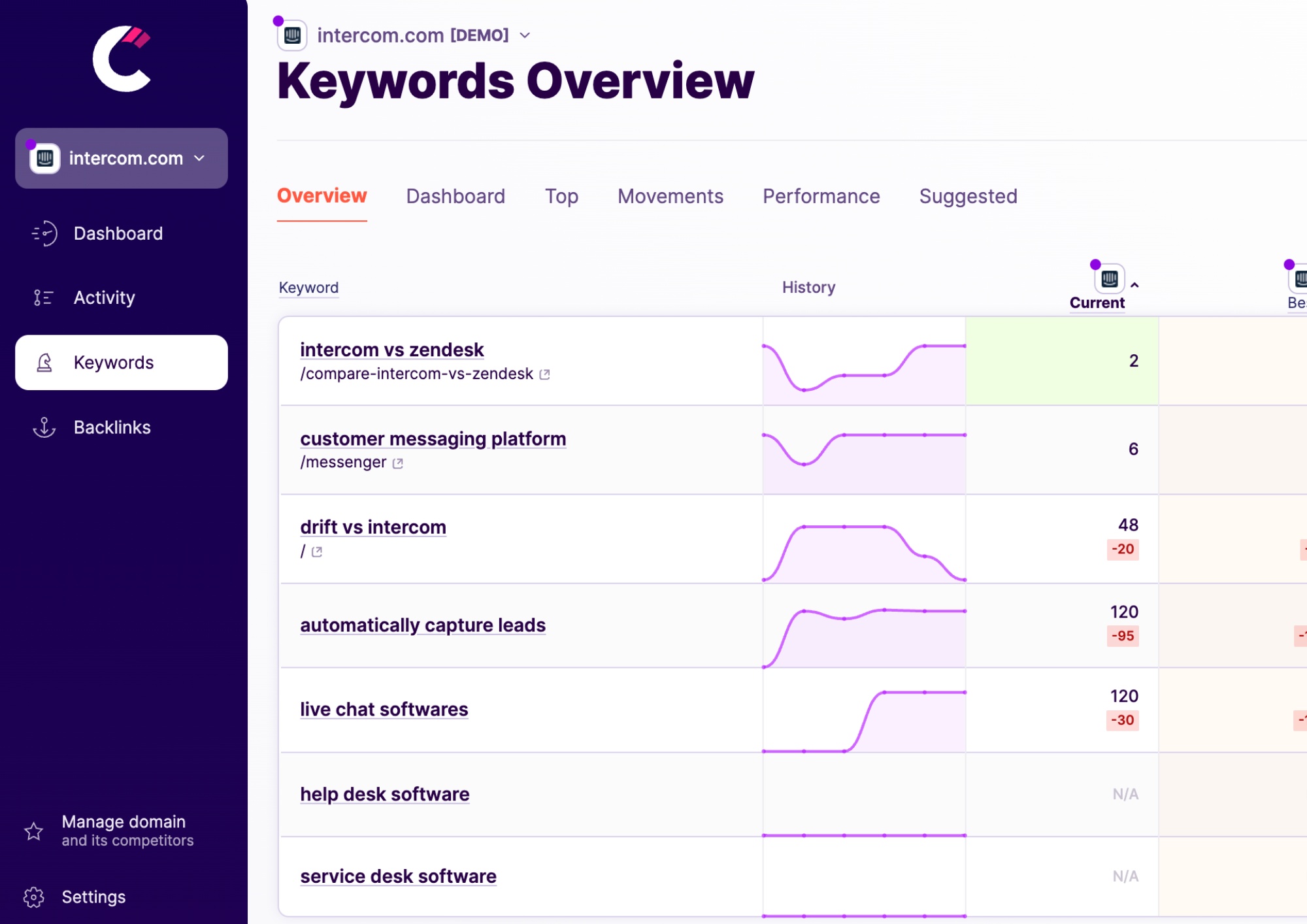
Understand competitors' content strategies and SEO efforts, including keywords ranking, backlink strategies, and new blog posts. This insight is crucial for refining your own content and SEO tactics.
Understanding your competition is only half the battle; the real game-changer is how you leverage these insights for your business’s growth. Here’s how you can put competitive insights to work:
Strategic Decision-Making: Use the insights gained about competitors’ strengths and weaknesses to inform your strategic decisions. This could involve anything from product development to marketing strategies.
Example: A tech company notices its competitors focusing heavily on AI features. They decide to invest in R&D for AI, differentiating their product with unique AI capabilities that competitors lack.
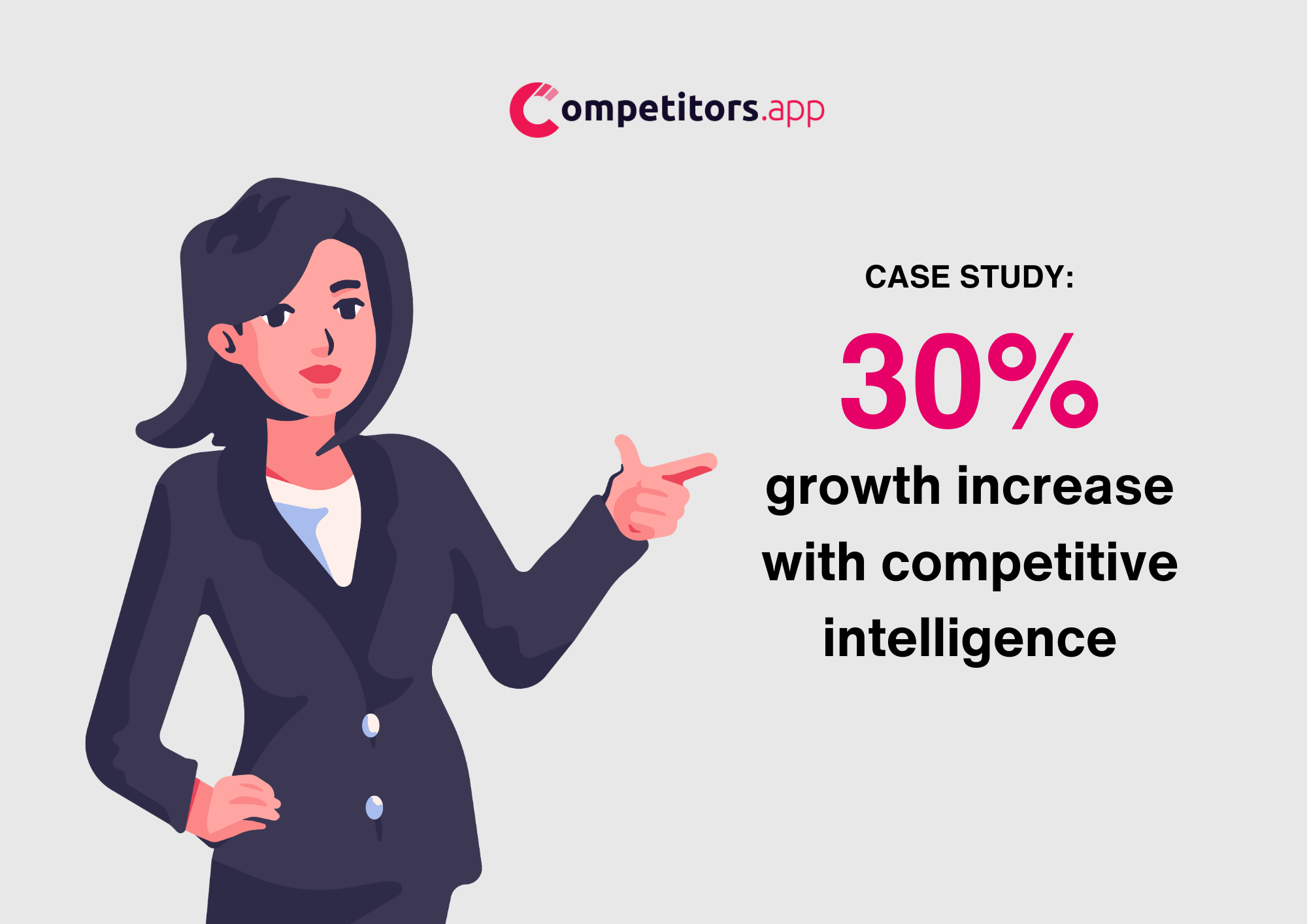
In this paragraph we will explore how one of the top Competitive Intelligence agencies managed to help a fintech company become a leader in the market and achieve unprecedented growth.
Background: A fintech company, having been one of the first to enter the market and receiving significant funding, began to notice a slowing in growth. With competitors entering the market and offering similar services, there was a noticeable decline in sign-ups and sales, leading to concern from investors.
Challenge: The company sought to understand why users were choosing competitors over their platform. They questioned whether it was due to price, customer service, or specific features that were more appealing to customers.
Approach: The company narrowed down their analysis to five key competitors (from an initial list of 23) and focused on understanding various aspects including workflow, features and capabilities, reporting, pricing, contracts, number of subscribers, third-party integrations, and future developments.
Methodology: Instead of relying solely on desk research, the company actively engaged with the competitors. They created a plausible cover story to facilitate discussions and demonstrations of the competitors’ platforms. This approach allowed them to gain a customer’s perspective and direct insights from the creators of the platforms. They undertook demonstrations of the competitors’ SaaS offerings, arranged follow-up calls, and negotiated terms to gain a comprehensive understanding.
Immediate Insights: The fintech company received instant insights, including recorded demonstrations of their competitors’ products, which answered many of their key questions.
Results: The fintech company was able to understand why customers were moving to competitors or staying with them. They gained insights into competitors’ future plans and even received new product ideas. This comprehensive understanding led to a significant increase in their growth by 30%, as they could now differentiate their offerings more effectively in the market.
This case study exemplifies how competitive intelligence can be strategically employed to understand market dynamics, customer preferences, and competitors’ strategies, ultimately leading to significant business growth and market leadership.
Navigating the landscape of competitive intelligence is fraught with challenges that businesses must adeptly manage to gain meaningful insights:
Data Overload: In today’s information-rich environment, the sheer volume of data available can be daunting. Businesses must develop strategies to efficiently sift through this data, identifying what is relevant to their specific needs and objectives.
Accuracy and Reliability: The dynamic nature of markets means that data can quickly become outdated. Ensuring the reliability and timeliness of information is critical, as decisions based on inaccurate data can lead to misguided strategies.
Ethical Boundaries: Ethical considerations are paramount when gathering competitive insights. Companies must avoid crossing into unethical practices such as corporate espionage. Adhering to legal and moral standards is essential to maintain credibility and avoid potential legal repercussions.
Resource Intensity: Continuous monitoring and analysis of competitors demand substantial resources, both in terms of manpower and financial investment. Smaller businesses, in particular, may find this challenging, requiring them to be more strategic in their approach.
Interpreting Data: The ability to interpret and translate raw data into actionable insights is a skill that comes with experience. Misinterpretation of data can lead to incorrect conclusions, making it crucial to have skilled analysts who can discern the true implications of the information gathered.
Adapting to Changes: The business environment is constantly evolving, with competitors frequently changing tactics. Staying agile and being able to quickly adapt to these changes is essential to maintain the relevance and effectiveness of competitive insights.
Addressing these challenges requires a balanced approach that combines effective data management, ethical practices, skilled analysis, and agility. Overcoming these hurdles is key to harnessing the full potential of competitive insights for strategic decision-making.

The integration of Artificial Intelligence (AI) in gathering competitive insights represents a significant advancement in the field. AI’s role involves:
Automated Data Collection: AI algorithms can efficiently gather vast amounts of data from various sources, significantly reducing the time and effort required for manual collection.
Advanced Analysis: AI excels in analyzing large datasets, identifying patterns and trends that might be missed by human analysts.
Predictive Insights: AI can forecast future market trends and competitor moves based on historical data, offering businesses a strategic advantage.
Real-Time Monitoring: AI enables continuous monitoring of competitors, providing real-time insights that are crucial for quick decision-making.
Challenges and Reliability: While AI offers many benefits, its reliability depends on the quality of data input and the algorithms used. Misinterpretation and biases in AI can lead to flawed insights, necessitating a combination of AI and human expertise for balanced analysis.
The role of AI in competitive insights is transformative, offering businesses the tools to navigate the competitive landscape more effectively. However, it’s essential to approach AI as a complementary tool, where human oversight ensures the accuracy and applicability of insights.
In conclusion, competitive insight is an invaluable asset in the toolkit of any business striving to stay ahead in today’s market. Key takeaways include:
Understanding Competitors: Deeply understanding your competitors allows for more informed strategic decisions and innovative approaches.
Leveraging Tools: Utilizing tools and platforms like Competitors.app provides concrete data and insights into competitors’ strategies and market trends.
Challenges: While obtaining competitive insight is challenging, overcoming these obstacles is crucial for gaining a strategic edge.
Role of AI: AI plays a transformative role in gathering and analyzing competitive insights but should be used in conjunction with human expertise.
Actionable Insights: The ultimate goal of competitive insight is to translate it into actionable strategies that drive business growth and differentiation.
Remember, the ability to adapt and evolve based on competitive insights can significantly impact your business’s success and sustainability.
Competitive insight specifically focuses on understanding competitors' strategies, strengths, weaknesses, and market behavior, while market research involves broader analysis of market trends, customer behaviors, and industry dynamics.
Competitive insight data should be updated regularly, ideally in real-time or at least quarterly, to accurately reflect the current market and competitor strategies.
Ethical guidelines include respecting privacy laws, avoiding deceptive practices, and not infringing on intellectual property rights.
Yes, small businesses can benefit significantly as competitive insights help understand their market position, identify niche opportunities, and compete effectively.
A competitive audit can reveal a competitor's marketing strategies, product strengths and weaknesses, customer base, and market positioning.
Fast-paced industries like technology, retail, finance, and consumer goods benefit the most, as market dynamics in these fields change rapidly.
Yes, it's crucial for tracking online competitors, especially in industries like e-commerce, digital services, and technology.
Yes, it helps in identifying potential risks, understanding competitor responses to similar crises, and aids in strategic planning.
Legal implications can arise if gathering methods violate privacy laws, engage in corporate espionage, or infringe intellectual property rights.
This involves monitoring competitors' digital footprints, such as social media ads, PPC campaigns, and SEO strategies.
Yes, it's relevant for understanding the landscape of donor engagement, fundraising strategies, and program effectiveness.
Implement robust cybersecurity measures, restrict access to sensitive information, and regularly update data protection strategies, but in general public information will never be able to be restricted.